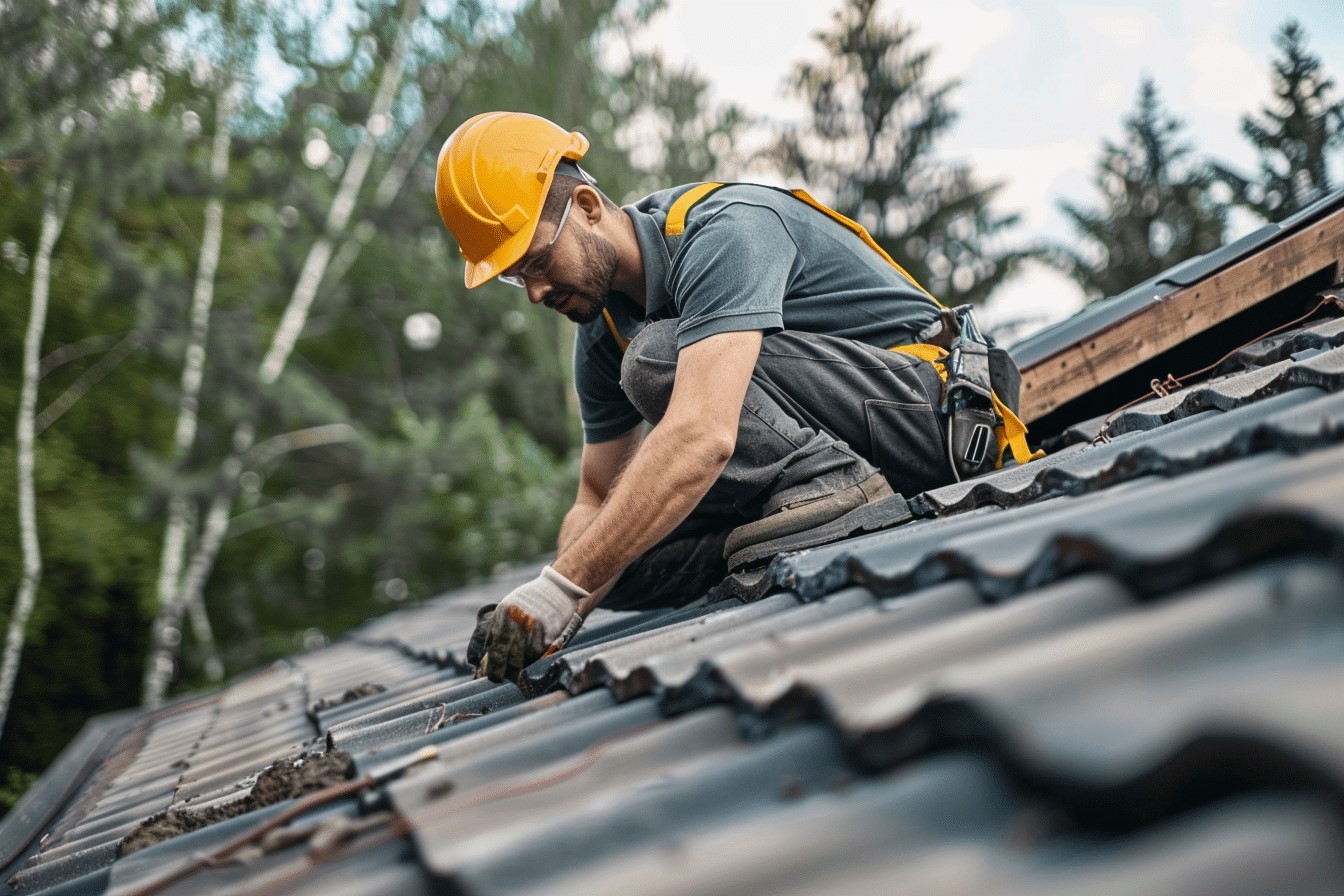
Making the Right Choice for Your Home
Deciding between roof Repair vs. replacement is a critical decision for homeowners. This comprehensive guide will help you navigate this decision with confidence. For more information on
click here.
Understanding Roof Repair
Roof repair involves fixing specific areas of damage or wear on your roof, making it a more cost-effective and quicker option compared to a full replacement.
benefits of Roof Repair:
- Cost-Effective: Often cheaper than a full replacement.
- Quick Fixes: Repairs can usually be completed swiftly, minimizing disruption.
- Prolongs Roof Life: Regular maintenance and repairs can extend the life of your roof.
When to Consider Roof Repair:
- Minor Damage: Limited to a small area or a few shingles.
- Recent Installation: If your roof is relatively new and still under warranty.
- Budget Constraints: If a full replacement isn’t financially feasible at the moment.
Common Roof Repairs:
- Shingle Replacement: Replacing a few damaged or missing shingles.
- Leak Repairs: Fixing small leaks to prevent water damage.
- Flashing Repairs: Repairing or replacing the flashing around chimneys, vents, and skylights.
Understanding Roof Replacement
Roof replacement involves removing the existing roof and installing a new one. This process is more extensive and expensive but is often necessary for older roofs or severe damage. Learn more about the
process.
Benefits of Roof Replacement:
- Long-Term Solution: Provides a fresh start and can last 20-30 years or more.
- Increased Home Value: A new roof can significantly boost your home’s curb appeal and resale value.
- Improved Energy efficiency: Modern roofing materials can enhance your home’s energy efficiency.
When to Consider Roof Replacement:
- Extensive Damage: If more than 30% of your roof is damaged.
- Old Roof: If your roof is nearing the end of its lifespan (typically 20-25 years for asphalt shingles).
- Frequent Repairs: If you find yourself constantly needing repairs, a replacement might be more cost-effective in the long run.
Steps in Roof Replacement:
- Inspection and Estimate: A thorough inspection and an estimate of costs and materials.
- Removal of Old Roof: Stripping away the existing roofing materials.
- Repairing the Decking: Fixing any damage to the underlying roof structure.
- Installation of New Roof: Applying new roofing materials and ensuring proper insulation and ventilation.
Discover the advantages of
today.
Factors to Consider When Deciding
Roof Age:
The age of your roof is a crucial factor. Most roofing materials have a specific lifespan, and if your roof is approaching or has exceeded this period, replacement is usually the best option.
Extent of Damage:
Assess the severity and spread of the damage. Minor issues can be fixed with repairs, but widespread problems typically necessitate a replacement.
Cost Implications:
Compare the costs of repeated repairs versus a one-time replacement. Sometimes, investing in a new roof can be more economical over time.
Energy Efficiency:
New roofing technologies offer improved insulation and energy efficiency. If your current roof is outdated, replacing it can lead to substantial savings on energy bills.
Understand the key factors of deciding between roof repair or replacement.
Case Studies: Roof Repair vs. Replacement
Minor Leak in a New Roof:
Situation: A relatively new roof with a small leak.
Solution: A quick and inexpensive repair to fix the leak.
Outcome: The repair extends the roof’s life without significant expense.
Multiple Leaks in an Old Roof:
Situation: An old roof with multiple leaks and signs of wear.
Solution: Full roof replacement to ensure long-term protection.
Outcome: The new roof enhances home value and reduces the likelihood of future issues.
Storm Damage:
Situation: Significant damage from a storm, affecting large portions of the roof.
Solution: Depending on the extent of the damage, either targeted repairs or a full replacement may be necessary.
Outcome: Ensures the home is safe and protected from further weather damage.
Pros and Cons: Roof Repair vs. Replacement
Pros of Roof Repair:
- Lower Initial Cost: Repairs are generally less expensive upfront.
- Less Disruption: Repairs can be completed quickly, causing minimal disturbance.
Cons of Roof Repair:
- Temporary Fix: Repairs may only be a short-term solution.
- Frequent Maintenance: Ongoing repairs may be necessary, adding up in cost.
Pros of Roof Replacement:
- Long-Term Solution: A new roof offers a lasting solution and peace of mind.
- Enhanced Aesthetics: Improves the overall look and value of your home.
Cons of Roof Replacement:
- Higher Initial Cost: The upfront cost is significantly higher.
- Longer Process: Replacement takes more time and can be more disruptive.
Frequently Asked Questions (FAQs)
How do I know if I need a roof repair vs. replacement?
Evaluate the age of your roof, the extent of the damage, and your long-term plans for your home. A professional inspection can provide a clearer picture.
What is the average lifespan of a roof?
Most roofs last between 20-25 years, but this can vary based on the material and local weather conditions.
How much does it cost to repair a roof?
The cost can vary widely depending on the type and extent of the repair needed. Minor repairs may cost a few hundred dollars, while more extensive repairs can run into the thousands.
How much does a roof replacement cost?
Roof replacement costs depend on the size of the roof, the materials used, and labor costs. On average, a new roof can cost anywhere from $5,000 to $15,000.
Can I repair my roof myself?
While minor repairs might be manageable for a DIY enthusiast, it’s often best to hire a professional to ensure the job is done correctly and safely.
How long does a roof repair take?
Most roof repairs can be completed in a day or two, depending on the complexity of the work.
How long does a roof replacement take?
A full roof replacement typically takes about a week, but this can vary based on the size and complexity of the roof.
Will insurance cover roof repairs or replacement?
It depends on your insurance policy and the cause of the damage. Check with your insurance provider to understand your coverage.
What materials should I choose for a new roof?
The best material for your new roof depends on your budget, climate, and aesthetic preferences. Common options include asphalt shingles, metal, and tile.
How can I maintain my roof after repairs or replacement?
Regular inspections, cleaning gutters, and removing debris can help maintain your roof’s condition and extend its lifespan.
Conclusion
Deciding between roof repair vs. replacement involves considering several factors, including the age of your roof, the extent of damage, and your budget. While repairs offer a quick and cost-effective solution, a full replacement provides a long-term fix and can enhance your home’s value and efficiency. By understanding the differences and assessing your specific situation, you can make an informed decision that ensures the safety and longevity of your home.
For expert advice and quality roofing services, trust Savage Roofing. Whether you need minor repairs or a complete roof replacement, our experienced team is here to help. Contact us today for a free quote and personalized consultation.
